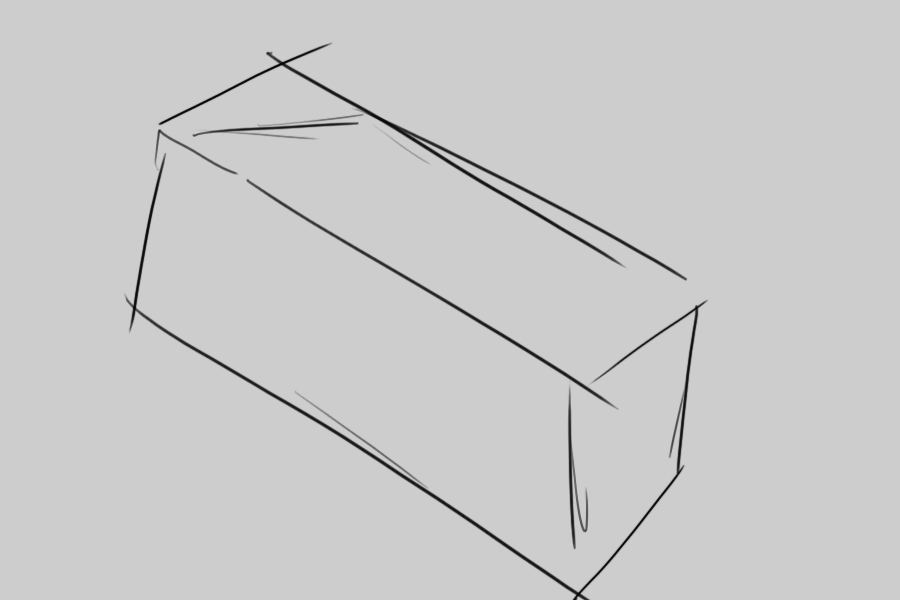Trying to figure out what my problems is.
Think it's a combination of a couple of things but with this one, I'm going for the fact that I don't think I've learned to really draw with just pure line. It was always a means to an end, so when it comes to something like storyboarding where line is the end, things get difficult.
Also here, still experimenting with ways to grip the stylus, some a bit better than others and been leaning to one lately that's actually opposite of how I hold a conte, but different than "writing mode". In writing mode your thumb plays huge role in the strokes you make and also favor wrist movement which is always harder to get a straight line since it's pretty much a ball-and-socket type radial movement that's super close to the point of interaction of the pen so you have a lot of energy to try and tame.
In conte mode, the thumb gets involved as well but it's a lateral movement that gives pressure, which translates to strokes on the side of the crayon where your forced to move your shoulder because your wrist has to accommodate for that grip. This of course is impossible on a cintiq because in its current form, wacom only tracks a single point of interaction at the tip- so beyond a certain bearing, it stops tracking. It might be possible to create some sort of rig to attach onto the pen to recreate this mode...hm.
This new mode I've been trying totally eliminates the thumb from the equation but recreates conte mode's wrist lock by gripping the pen in a way that encourages drawing from the shoulder. However, since you're dispelling control of the wrist and thumb (2 major components of writing mode) getting those very specific angles at the corner of the lips for example or at the brows is super difficult so volume through the relation of lines and their angles can almost be impossible in this mode since a lot of that needs careful radial movement from either your wrist in pen mode or lateral thumb in conte mode.
thinking...maybe it might pay off to go mode 3 (new mode) then mode 1 (writing mode) for the expressions/details.
Now...this all seems like way too much analysis for what it is, and probably it is, but for someone who first got started with their copy of Hogarth and leaned more to the chiaroscuro side of things- line always just seemed like something you could skip...and you can! Drawing, is just a foundation for whatever you're going to put on top and line isn't the only method to do that; it's usually the "fastest" but not always...I don't think. It may be and I'm just not there yet, but from experience, you could achieve the same product through different methods.
For storyboarding, at least in the digital age, this can't be done. If things were still done with charcoal and china markers, then sure, there'd be no problem translating what you learned in drawing class to your boards. However, this special conte-like wacom pen or jerry-rigged facsimile doesn't exist yet so basically, as a teacher of mine suggested...
just practice.





















2 comments:
hey man your drawings are good.
but when studying maybe slow down? and be more careful with your lines? it seems your drawing really fast and making quick strokes, which is fine, but when your studying i think its best to slow down and be really careful when putting down your lines.
but man i think you got a lot of potential.
man, thanks for the really kind words anon-trying to be more careful
Post a Comment